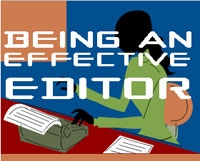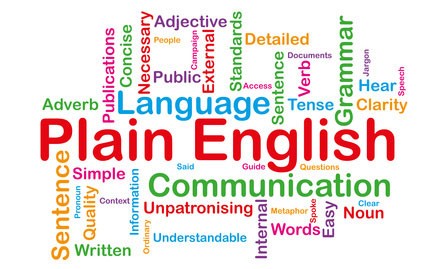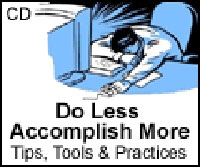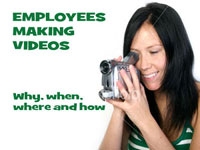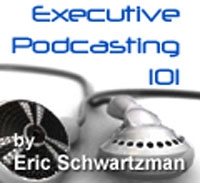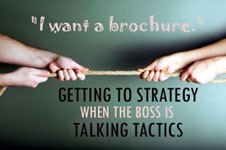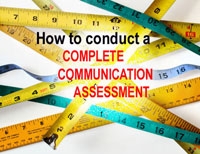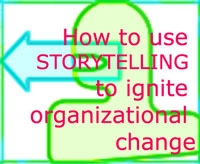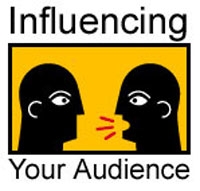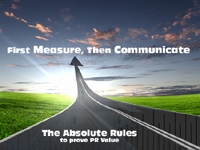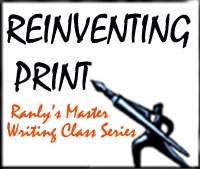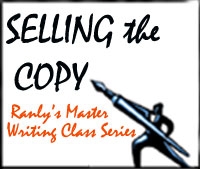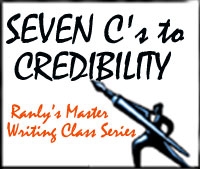- Do your communication efforts tend to be “one-offs” that consume a lot of time and effort but don’t always generate the results you had hoped for?
- Do senior leaders’ eyes glaze over when you explain your latest “big idea”?
- Do you wish you had more time to spend learning about new things and less putting out fires?
While strategic planning is probably at the top of the list of things that most communicatorsdon’t want to do, the reality is that when done well, strategic planning can not only help to save time, and money, but can increase the odds of achieving desired communication outcomes. And, the good news is, effective planning doesn’t have to take weeks or months or result in dozens of meetings. In fact, the process can actually be quite simple and straightforward.
This webinar will offer easy-to-follow steps and provide practical tips and advice that can be used for any planning effort—from developing an internal communications plan to developing a marketing campaign—or even focusing on a single initiative.
What You Will Learn:
- How to position the plan for success by starting with the end in mind
- Why your mission statement is your friend
- How and why to align your efforts with your organization’s strategic plan
- A step-by-step process for developing a strategic plan
- Developing a process for plan updates – how to keep the plan alive
- How to build measurement into the plan
- How to make sure things get done!
Who Should Attend
- Communicators, PR and marketing professionals at all levels.
Presented by:
 Linda Pophal is CEO of Strategic Communications, and a marketing and communication strategist with 20+ years experience in healthcare, education and not-for-profit marketing and communications. She has managed all aspects of corporate and marketing communication including employee communication, public relations, advertising, social media, market research, brand management and strategic planning. Pophal has developed and implemented strategic business, marketing and communication plans for healthcare and educational organizations and consultants, generating measurable results based on client goals. She has developed and delivered training programs for national and local audiences on all aspects of communication management and employee relations. She is author of The Essentials of Corporate Communications and PR and Complete Idiot’s Guide to Strategic Planning.
Linda Pophal is CEO of Strategic Communications, and a marketing and communication strategist with 20+ years experience in healthcare, education and not-for-profit marketing and communications. She has managed all aspects of corporate and marketing communication including employee communication, public relations, advertising, social media, market research, brand management and strategic planning. Pophal has developed and implemented strategic business, marketing and communication plans for healthcare and educational organizations and consultants, generating measurable results based on client goals. She has developed and delivered training programs for national and local audiences on all aspects of communication management and employee relations. She is author of The Essentials of Corporate Communications and PR and Complete Idiot’s Guide to Strategic Planning.
Are you tired of struggling to get—and keep—people’s attention and convince them to take action?
You can improve your ability to connect with and influence others by learning how our brain works and applying some simple techniques based in neuroscience.
Forget about right brain/left brain, an archaic concept. Instead, the “social brain” drives our thinking and our actions.
This session will briefly cover basic neuroscience principles geared toward non-scientists. We’ll then focus on how you can apply those principles to help yourself and others think better and perform at higher levels. By taking these actions, you can improve your influencing skills and actions.
Learn how to:
- Increase your self-awareness to improve your ability to influence
- Design the best environment for influencing
- Speak and write with intent to make better connections with others
- Make your messages more compelling and memorable
- Listen more effectively
- Slow down and quiet the brain to tap into the unconscious and speed up gaining insights and influencing
- Ask powerful thinking questions that increase focus and gain greater clarity
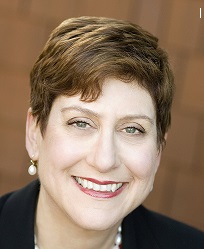 Your webinar leader, Liz Guthridge is an award-winning consultant, leadership coach and trainer who’s studied with Dr. David Rock of The NeuroLeadership Institute, Dr. BJ Fogg, founder of the Stanford Persuasive Technology Lab and other luminaries in the fields of employee communication and organizational change. Liz has extensive experience supporting leaders improve their communication, develop new habits and adapt their organizations.
Your webinar leader, Liz Guthridge is an award-winning consultant, leadership coach and trainer who’s studied with Dr. David Rock of The NeuroLeadership Institute, Dr. BJ Fogg, founder of the Stanford Persuasive Technology Lab and other luminaries in the fields of employee communication and organizational change. Liz has extensive experience supporting leaders improve their communication, develop new habits and adapt their organizations.
Liz Guthridge is an award-winning leadership coach, consultant and trainer with extensive change, employee communication and organization development experience.
As the founder of the boutique firm Connect Consulting, Liz works with leaders at all levels to help them move from blue-sky thinking to greener pastures actions. With her support, Liz’s clients enhance the clarity of their ideas, plans and actions. Her clients also improve the quality of their conversations, their ability to influence and their skill in building habits.
Liz contributed the chapter “Change Through Smart-Mob Organizing: Using Peer-by-Peer Practices to Transform Organizations” to the book The Change Champion’s Field Guide (Wiley 2013).
Besides being a certified coach in brain-based coaching, she is serving as a teaching assistant for the Executive Masters in NeuroLeadership program through the NeuroLeadership Institute co-founded by Dr. David Rock. Liz also is a graduate of Dr. BJ Fogg’s Persuasion Boot Camp and is one of his Tiny Habits™ coaches.
This webinar will help supervisors get the most out of their writers by creating an environment where writers develop and gain confidence, and where the focus is on the writer as much as the writing.
Practical Advice for:
- Building a collaborative relationship with writers
- Creating an atmosphere where writers develop
- Reducing the amount of time rewriting copy
- Improving editing skills
What You Will Learn:
- How to reinforce the notion that writing is valued
- How to improve communication with writers
- How to get the most out of a one-on-one conversation about performance
- How to build confidence
- How to distinguish between coaching and crisis repair
- What to do when you don’t think the writer will ever “get it”
- What to do when it becomes easier to toss the draft and write it yourself
- How to know when to make changes and when not to
- What you can do if you’re not confident
Real world questions answered:
- What processes can help avoid writer disasters at deadline?
- What do you tell a writer who’s article totally misses the mark?
- How should writers and graphic designers interact, and how often?
Instructor:
 Ken O’Quinn is a professional writing coach, who conducts workshops and one-on-one coaching in Fortune 500 companies and global public relations firms. He is the author of Perfect Phrases for Business Letters (McGraw-Hill, 2006).
Ken O’Quinn is a professional writing coach, who conducts workshops and one-on-one coaching in Fortune 500 companies and global public relations firms. He is the author of Perfect Phrases for Business Letters (McGraw-Hill, 2006).
He started Writing With Clarity in the mid-’90s, following a 21-year journalism career, most of it with the Associated Press. He now works with companies such as Chevron, Campbell Soup, Visa, Intel, Eli Lilly, Raytheon, Reebok, Motorola and Sprint, and with PR firms such as Fleishman Hillard, Burson-Marsteller, Porter Novelli and Edelman. He also is a writing instructor for the National Investor Relations Institute. He works with all levels of staff and managers. Ken has been a guest speaker at the PRSA and IABC international conferences and at the American Press Institute. His writing has appeared in major U.S. newspapers and in the Harvard Management Communication Letter and the Employee Communication Management Journal.
At Cisco, they’ve changed the way they use words. It’s saving them money and helping them work together better. It’s connecting the internal culture to the business in deeper, more meaningful ways. And that’s helping them serve customers better and sell more.
In this session, Mark Buchanan, program lead for Cisco’s brand language initiative, paints a picture of how Cisco is changing the way 75,000 employees are using words across a $130 Billion business. He’ll walk you through how the brand language team set the plan in motion and made lasting changes. He’ll include practical tips and share insights, successes, and challenges. And he’ll give you his thoughts about how the lessons from Cisco can make a difference for your business.
The session includes:
- Evaluating the opportunity
- Aligning your voice with your business
- Connecting with your audience
- Scaling the program
- Making it stick
Presented by:
 Mark Buchanan is the program lead for brand language at Cisco. He’s helping the company use language that is simpler and more distinctive. And he’s helping bring empathy back to a technology company that has always cared about people, but has found those values challenged by rapid growth and increasingly complex technology. He’s worked with Sales, Marketing, Engineering, Services and Corporate Communications and has seen impressive results across every function. Together, Mark and the people at Cisco are changing the culture of language and communications, around the world for 75,000 employees, 50,000 contractors and vendors, across a $130 billion business.
Mark Buchanan is the program lead for brand language at Cisco. He’s helping the company use language that is simpler and more distinctive. And he’s helping bring empathy back to a technology company that has always cared about people, but has found those values challenged by rapid growth and increasingly complex technology. He’s worked with Sales, Marketing, Engineering, Services and Corporate Communications and has seen impressive results across every function. Together, Mark and the people at Cisco are changing the culture of language and communications, around the world for 75,000 employees, 50,000 contractors and vendors, across a $130 billion business.
We’ve all heard the news: Forget flash (or even Flash). To attract and hold prospects to your website, you need content that meets the needs, values and expectations of your market. Great content draws visitors, attracts links, and builds your organization’s reputation for service and expertise. In short, content is king. But where will your content come from? How will you find it? How will you shape it? And how will you write it for maximum impact — and search engine visibility? Crafting Killer Web Content will show you how.
Learning Topics
In one convenient, 75-minute crash course, you will acquire the practical skills you need to:
- Uncover the hidden know-how within your organization
- Solicit cooperation from the crucial product and service people closest to your customers
- Create keyword-saturated Web glossaries in mere hours
- Select the best content options for your pages
- Craft effective, traffic-building blogs
- Incorporate keyword strategies into your writing
- Develop compelling case studies you can use on your website, collateral packages, press kits and more
Other value adds:
- Debunking the myth about writing long
- Why word-specificity is your friend
- Why testimonials and where they should go
- How to write skimmable sub-heads that tell the story
- Guarantees that guarantee believability
- What readers expect from marketing blog
Instructor:
 Jonathan Kranz is the author of Writing Copy for Dummies and a marketing/PR writer serving consumer and B2B clients in high-tech, healthcare, banking, insurance, education, financial services and other industries. His clients include Boston Private Bank & Trust, Dell Computers, IBM, Liberty Mutual, Pitney Bowes and many others. He is a regular contributor to leading marketing publications such as MarketingProfs.com, RainToday.com, DIRECT magazine, DM News and the Harvard Management Communications Letter. Jonathan has taught writing courses at Harvard University Extension School, Emerson College and Northeastern University, and offers in-house marketing writing seminars to corporate clients.
Jonathan Kranz is the author of Writing Copy for Dummies and a marketing/PR writer serving consumer and B2B clients in high-tech, healthcare, banking, insurance, education, financial services and other industries. His clients include Boston Private Bank & Trust, Dell Computers, IBM, Liberty Mutual, Pitney Bowes and many others. He is a regular contributor to leading marketing publications such as MarketingProfs.com, RainToday.com, DIRECT magazine, DM News and the Harvard Management Communications Letter. Jonathan has taught writing courses at Harvard University Extension School, Emerson College and Northeastern University, and offers in-house marketing writing seminars to corporate clients.
There’s too much silliness, noise, and crap coming at you, and you want a shut-off valve. You want to make more of a difference, working on only what truly matters. Right?
There’s too much information to manage and too many key messages for people to focus on, right?
Then you don’t want to miss this teleseminar! Best-selling author Bill Jensen will share tips, tools, and practices from two of his most recent books, The Simplicity Survival Handbook: 32 Ways to Do Less and Accomplish More and What Is Your Life’s Work? And he’ll tailor all those tips for communicators trying to break through the clutter and get their messages heard and acted upon.
What You Will Learn:
- Practical tips for doing less because you’re working smarter.
- Tips for educating your teammates and senior executive clients.
- Feeling jazzed that you have a lot more control over morebetterfaster than you thought you did!
Real World Questions That Will be Answered:
- Do your 3×5 rules apply to letters sent by mail?
- On the Communitelligence Communication Leadership blog, you and Bill Boyd have been really banging heads over the issue of whose the culprit in the information overload problem. You are really charging a big part of the problem to communicators. What are the biggest mistakes you think communicators are making?
- How long should an e-newsletter be, and any advice on format?
- OK Bill, it’s easy to say do less of what doesn’t really matter, but how do I actually decide what are those things?
- How do you feel about email where the message is entirely in the subject line?
Practical Advice For:
- Dealing with bosses and who just don’t get it.
- Deleting 75% of your emails.
- Composing emails, messages and deliverables that won’t get deleted!
- Getting more out of fewer meetings.
- Doing less to get the budgets you need and much more.
Testimonial:
- “Relevant topic; simple presentation of concepts; actionable tips and tools; down-to-earth presentation style (“one of us”)”
- “I already sent an e-mail this afternoon with the improved subject line format! Makes great sense. Excellent seminar all around — Look forward to more in the future.”
Instructor:
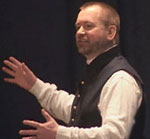 Harvard Business Review , CNBC and Fast Company have called Bill Jensen today’s foremost expert on work complexity and cutting through clutter to what really matters. The Conference Board designed an entire conference around his work.He has spent the past decade studying business’s ability to design work. (Much of what he has found horrifies him.)
Harvard Business Review , CNBC and Fast Company have called Bill Jensen today’s foremost expert on work complexity and cutting through clutter to what really matters. The Conference Board designed an entire conference around his work.He has spent the past decade studying business’s ability to design work. (Much of what he has found horrifies him.)
He is an internationally-acclaimed author and speaker who is known for provocative ideas, extremely useful content, and his passion for making it easier for managers and employees to work smarter and accomplish extraordinary feats.
The common thread in every Jensen presentation is that your biggest competition is not “out there” — in today’s cluttered and morebetterfaster business environments, you are competing for everyone’s time and attention!
His first book, Simplicity, has been hailed as a “breakthrough in the design of communication and understanding,” and was the Number 5 Leadership/Management book on Amazon in 2000. His next best-sellers were Work 2.0, and Simplicity Survival Handbook: 32 Ways to Do Less and Accomplish More.
His latest book, What is Your Life’s Work?, captures the intimate exchanges between mothers and daughters, fathers and sons, and caring teammates, all talking about what matters at work, and in life.
Bill has over 25 years of experience in communication and change consulting. He holds degrees in Communication Design and Organizational Development. He’s CEO of The Jensen Group, whose mission is: To make it easier to get stuff done. Among the Jensen Group’s clients are Bank of America, Merck, Pfizer, Duracell, NASA, The Royal Bank, The World Bank, Walt Disney World, American Express, the US Navy SEALS, the government of Ontario, Singapore Institute of Management, Guangzhou China Development District, and the Swedish Post Office.
Bill’s personal life fantasy is to bicycle around the globe via breweries.
If you are like most communicators, you know that text alone is just not enough—today’s employees not only want to see their leaders on video, but want to be seen themselves. YouTube, Vimeo and FaceTime are teaching your employees how powerful video is, and learning about video in their non-work life makes them want to do more with it at work.
Creating meaningful business communications is not the same as recording cute dog tricks. Your employees need to know what works, and what doesn’t. And more importantly, you and your company need to be ready for: increased demand on your IT networks; the need to put policies and procedures in place and the importance of providing training to help them get it right.
In this series you will hear top practitioners talk about how they’ve put a new generation of digital video tools to work in their organization to inspire, lead and train employees; to cultivate employee engagement by putting the right tools in the hands of employees themselves; and to integrate external and internal communications for the kind of results one can only get with truly aligned communications. We’ve found practioners from leading companies to share specifics on what works across categories including internal communications, marketing, PR, social media and human resources.
What You Will Learn:
- How leading companies use employee created video: when, where, and how
- What the IT and regulatory issues are that you need to be most concerned about
- How leaders train and manage employees who are contributing video
- How video can be better integrated with intranets and social media
- The three most important things to AVOID with employee generated content.
- AND most importantly, what kinds of good results happen when you get it right.
Presented by:
 Ronna Lichtenberg is co-founder and CEO, Videotrope. Prior to her entrepreneurial career, Ronna had a long-tenured career contributing to strategic planning and marketing initiatives at Prudential and Prudential Securities. During her tenure, she was the first woman named to Prudential Securities Operating Council. As a superior communicator and strategic consultant, Ronna’s experience incorporates wide-ranging personal experience as a communicator, including former contributing editor of “O”, the Oprah magazine and regular appearances as a workplace expert on national TV. She has published three books in ten languages (to rave reviews) and has a decade of experience as a keynote speaker with Fortune 500 companies and helping small to large businesses successfully execute business development imperatives and strategic initiatives.
Ronna Lichtenberg is co-founder and CEO, Videotrope. Prior to her entrepreneurial career, Ronna had a long-tenured career contributing to strategic planning and marketing initiatives at Prudential and Prudential Securities. During her tenure, she was the first woman named to Prudential Securities Operating Council. As a superior communicator and strategic consultant, Ronna’s experience incorporates wide-ranging personal experience as a communicator, including former contributing editor of “O”, the Oprah magazine and regular appearances as a workplace expert on national TV. She has published three books in ten languages (to rave reviews) and has a decade of experience as a keynote speaker with Fortune 500 companies and helping small to large businesses successfully execute business development imperatives and strategic initiatives.
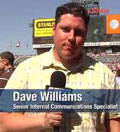 Dave Williams has been working at ESPN since 2000. Prior to joining the corporate communication team he worked with ESPN’s production operations team on all of ESPN’s studio shows including SportsCenter, Sunday NFL Countdown, and Baseball Tonight. As a senior internal communication specialist, Williams brings his vast videography, digital editing, writing, and production experience to the internal communication team. He ensures that the multi-media aspects of the organization’s internal communication strategy are of the same high-quality production techniques that ESPN employees are accustomed to seeing on their external programming.
Dave Williams has been working at ESPN since 2000. Prior to joining the corporate communication team he worked with ESPN’s production operations team on all of ESPN’s studio shows including SportsCenter, Sunday NFL Countdown, and Baseball Tonight. As a senior internal communication specialist, Williams brings his vast videography, digital editing, writing, and production experience to the internal communication team. He ensures that the multi-media aspects of the organization’s internal communication strategy are of the same high-quality production techniques that ESPN employees are accustomed to seeing on their external programming.
 Deirdré Straughan is a Technical Content specialist for Solaris Product Management at Oracle. In this position she produces and/or manages production of technical content (video, white papers, web pages) about key Solaris technologies including storage, networking, and installation. Examples of my video work can be seen here (look for the items with my name in the description). In this position she produces and/or manages production of technical content (video, white papers, web pages) about key Solaris technologies including storage, networking, and installation. Examples of my video work can be seen here (look for the items with my name in the description). Deirdré has been communicating online since 1982. Her experience managing and communicating with online communities dates back to 1993, when she began interacting with Incat/Adaptec/Roxio customers via CompuServe, the Usenet, and listserv. She also wrote, edited and managed a stable of newsletters with 140,000 subscribers, and managed websites and online strategy for Adaptec/Roxio.
Deirdré Straughan is a Technical Content specialist for Solaris Product Management at Oracle. In this position she produces and/or manages production of technical content (video, white papers, web pages) about key Solaris technologies including storage, networking, and installation. Examples of my video work can be seen here (look for the items with my name in the description). In this position she produces and/or manages production of technical content (video, white papers, web pages) about key Solaris technologies including storage, networking, and installation. Examples of my video work can be seen here (look for the items with my name in the description). Deirdré has been communicating online since 1982. Her experience managing and communicating with online communities dates back to 1993, when she began interacting with Incat/Adaptec/Roxio customers via CompuServe, the Usenet, and listserv. She also wrote, edited and managed a stable of newsletters with 140,000 subscribers, and managed websites and online strategy for Adaptec/Roxio.
Forward-thinking marketing and public relations executives are using the power of podcasting to communicate directly with their key audiences via the Net. Find out what podcasts are and how you can put them to work for your organization. This webinar, led by the producer and host of the popular podcast On the Record…Online, will take you through the process in five easy steps, to arm you with the knowledge you need to evaluate and decide how to integrate this effective, efficient channel into your marketing or communications program.
Learning Topics:
- The ABCs of Podcasting: what podcasts are and where they came from, how to use them, popular formats and lengths, how to measure and monitor them, and more
- Getting started: the equipment you’ll need, where to find freeware and commercial podcasting software, and troubleshooting staples
- Production tips: how to conduct and record live and phone interviews, what freeware to use to edit your podcast, and how to find podcasts through directories and search engines
- Business case studies: Hear excerpts from leading business podcasts, and learn how Disney and IBM use podcasts to promote events and thought leadership
- Marketing your podcast: Get a primer on RSS-enabling and uploading your podcast, learn how to launch a blog to distribute your podcast, and get valuable leads on how to promote your feed.
Instructor:
 Eric Schwartzman is managing director of Schwartzman & Associates, a boutique public relations firm based in Los Angeles that specializes in helping organizations integrate the Web into their marketing and public relations programs. He is also chairman and founder of iPressroom, which helps organizations extend the impact of their public relations, corporate communications and marketing programs through easy-to-use, marketing communications software tools and services.
Eric Schwartzman is managing director of Schwartzman & Associates, a boutique public relations firm based in Los Angeles that specializes in helping organizations integrate the Web into their marketing and public relations programs. He is also chairman and founder of iPressroom, which helps organizations extend the impact of their public relations, corporate communications and marketing programs through easy-to-use, marketing communications software tools and services.
A recognized expert in the field of new media marketing communications, Eric has presented at numerous conferences and seminars and has appeared at many colleges and universities. He is regularly quoted in articles on podcasting, blogging and new media in publications such as Advertising Age, PR Week, Podcasting News, Econtent, PR News and Media Relations Insider. He blogs about how public relations, the news media and emerging technologies influence perception and shape popular opinion at the Spinfluencer. His podcast On the Record… Online features discussions with leading journalists about how they use technology to cover the news.
Testimonials:
- “Eric makes it easy to understand how to use podcasts to communicate to your key audiences.” Ava Gutierrez, media relations director, County of Los Angeles
- “Just the right amount of information — not too technical and applicable specifically for creating a podcast campaign.” Sarah Prinster, director of marketing, Savi Technology
- “… a must for any marketing or PR exec who wants to get up to speed with podcasting.” Sally Falkow, APRP, Expansion Plus
 When the exec or the client is stuck on newsletters, cool new technologies, or sending e-mails and memos, get them refocused on strategy. Quit being an order taker, and start doling out more value to your execs and clients by using questions and a little psychology to drive strategic thinking. Now more than ever communicators must be courageous and add value. Tight Q&A, skilled facilitation approaches and more enable the communicator.
When the exec or the client is stuck on newsletters, cool new technologies, or sending e-mails and memos, get them refocused on strategy. Quit being an order taker, and start doling out more value to your execs and clients by using questions and a little psychology to drive strategic thinking. Now more than ever communicators must be courageous and add value. Tight Q&A, skilled facilitation approaches and more enable the communicator.
What You Will Learn:
- Use questions effectively to drive strategic thinking
- Enable client or exec “discovery” of the right approach
- Use planning and flexible facilitation to create planning meeting that achieve goals and bring ‘em back for more impact
Questions that will be answered
- How do I tell my exec their idea is a bad one?
- How do I get my client refocused on the right stuff?
- What do I do when my exec high-jacks my planning meeting?
- What do I do when we stray off agenda at a strategic planning session?
Presented by:
 Stacy Wilson, ABC, is president of Eloquor Consulting, Inc., in Lakewood, Colorado. Stacy has more than 22 years of experience and has been completely focused on internal communication and organizational development since the mid 90’s. Her firm helps organizations communicate more effectively with employees, using internal communication as a lever to positively impact the bottom line.
Stacy Wilson, ABC, is president of Eloquor Consulting, Inc., in Lakewood, Colorado. Stacy has more than 22 years of experience and has been completely focused on internal communication and organizational development since the mid 90’s. Her firm helps organizations communicate more effectively with employees, using internal communication as a lever to positively impact the bottom line.
Eloquor serves a broad array of industries with a full complement of internal communication services. Stacy and her team primarily focus on: Intranet, portal and social technology governance and usability; Change communication; Strategic internal and HR communication; Internal brand integration; Leader communication training and other OD assignments.
The firm’s sweet spots are technology-related assignments, such as portal governance and usability, and change communication, such as major systems changes. Clients include ConocoPhillips, MTS Systems, Tyco Electronics, IHS, the IRS, a Fortune 35 healthcare company, a Fortune 150 defense contractor and a Fortune 50 financial services company. Stacy is a past IABC international board member and recently chaired the 2008 IABC Southern Region Conference. She is also a member of the Council of Communication Management and the Society of HR Management.
So often communicators surrender to time and budget challenges jumping into tactics or solutions without ever conducting a complete communications assessment. But without a baseline, it is nearly impossible to measure the success of ones efforts. It is also more challenging to demonstrate ones strategic abilities. Thus, communicators cannot afford to not conduct a complete communications assessment.
What You Will Learn:
- Why it is crucial for communicators to take time out to conduct a communications assessment and understand business needs.
- What formal and informal communications assessment tools/tactics will support your time and budget.
- How much time and budget is required to support formal and informal communications assessment tools/tactics.
- How to effectively communicate your assessment findings.
- How to leverage your findings to create a solid communication strategy and plan.
- What lessons can be learned from real world communications assessments conducted for NEC, Adidas-Solomon, UOP, ServiceMaster and other leading organizations.
Who Should Attend
This session is perfect for any level of experience, from those who are just starting in the field or those who have never conducted an assessment, to seasoned communication veterans.The seminar is designed for communication professionals who want to take their programs to the next level or arm themselves to move from tactician to strategic planner. Size of organization does not matter. It is especially suitable for individuals in:
- Internal and Corporate Communications
- Public relations
- Media Relations
- Public Affairs
- Marketing
- Small and mid-sized business leaders
- Corporate executives who are new to communication and measurement
Presented by:
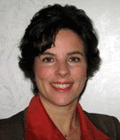 Julie Baron is Principal of COMMUNICATION WORKS. She has over 18 years of communications experience. Julie is a resourceful communications strategist with demonstrated ability to work internally within the organization, as well as externally within the community. Her functional expertise includes executive/employee communications, speech writing, cultural awareness and marketing communications.With a proven track record of positively impacting financial and operating results through communication, Julie’s client list includes Abbott, adidas-Salomon, HUB International, National Association of Realtors, Revell, and Pepsi Americas. Prior to opening the doors of COMMUNICATION WORKS, Julie held senior level communications positions for NEC Technologies, Inc. and Motorola, Inc. She also has agency experience.Julie has published several communication and training articles and has lectured on communications topics including CEO communication, culture development, global communication and internal marketing. She’s been recognized for her leadership abilities, team focus, creative strategy, execution and effective working relationships.An active member of the International Association of Business Communicators (IABC), Julie has held many volunteer leadership positions including president of the IABC/Chicago chapter, the association’s second largest chapter worldwide. Julie graduated from Northwestern University in Evanston, Illinois, with a master’s degree in communications. She holds a bachelor’s degree in broadcasting from SUNY Buffalo.
Julie Baron is Principal of COMMUNICATION WORKS. She has over 18 years of communications experience. Julie is a resourceful communications strategist with demonstrated ability to work internally within the organization, as well as externally within the community. Her functional expertise includes executive/employee communications, speech writing, cultural awareness and marketing communications.With a proven track record of positively impacting financial and operating results through communication, Julie’s client list includes Abbott, adidas-Salomon, HUB International, National Association of Realtors, Revell, and Pepsi Americas. Prior to opening the doors of COMMUNICATION WORKS, Julie held senior level communications positions for NEC Technologies, Inc. and Motorola, Inc. She also has agency experience.Julie has published several communication and training articles and has lectured on communications topics including CEO communication, culture development, global communication and internal marketing. She’s been recognized for her leadership abilities, team focus, creative strategy, execution and effective working relationships.An active member of the International Association of Business Communicators (IABC), Julie has held many volunteer leadership positions including president of the IABC/Chicago chapter, the association’s second largest chapter worldwide. Julie graduated from Northwestern University in Evanston, Illinois, with a master’s degree in communications. She holds a bachelor’s degree in broadcasting from SUNY Buffalo.
 Sean Williams is the owner of Communication AMMO, Inc. He helps leaders improve their communication skills, build strategic communication plans, strengthen internal communication capabilities and effectively measure the results. His clients include the Federal Reserve Bank of Cleveland and KeyBank. Follow him on Twitter at @CommAMMO.
Sean Williams is the owner of Communication AMMO, Inc. He helps leaders improve their communication skills, build strategic communication plans, strengthen internal communication capabilities and effectively measure the results. His clients include the Federal Reserve Bank of Cleveland and KeyBank. Follow him on Twitter at @CommAMMO.
Most recently, Williams was vice president of Corporate Communications for a financial institution, leading the internal communication, and internal and external public relations measurement and evaluation functions during the height of the financial crisis.
Previously, he was manager of Editorial Services for The Goodyear Tire and Rubber Company, responsible for internal communication and video production, photography and event production management. While at Goodyear, Williams lead the team rebuilding the corporate intranet, using editorial content from around the world. He also served as the primary internal communication consultant to the company’s senior leadership and produced videos and still photography for a variety of external and internal constituencies.
 Susan D’Alexander, ABC, is Senior Communications Consultant at Motorola Global Communications. Susan has a 25-year career with Motorola with more than 18 years experience in communication management, including corporate, HR, marketing and corporate social responsibility communications. Susan is a member of the International Association of Business Communicators (IABC) earning an accredited business communicator (ABC) certification in 2008. She holds a Bachelor of Science degree from Western Illinois University and a MBA from Roosevelt University, Chicago, Illinois.
Susan D’Alexander, ABC, is Senior Communications Consultant at Motorola Global Communications. Susan has a 25-year career with Motorola with more than 18 years experience in communication management, including corporate, HR, marketing and corporate social responsibility communications. Susan is a member of the International Association of Business Communicators (IABC) earning an accredited business communicator (ABC) certification in 2008. She holds a Bachelor of Science degree from Western Illinois University and a MBA from Roosevelt University, Chicago, Illinois.
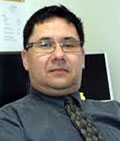 Alex Vass has been a communicator, telling stories and creating messages, all of his working life. He is presently a communications advisor with the Royal Canadian Mounted Police responsible for internal and external communications for the Codiac Regional RCMP detachment based in Moncton, New Brunswick. He along with his fellow RCMP communications colleagues in New Brunswick recognized the need for a
Alex Vass has been a communicator, telling stories and creating messages, all of his working life. He is presently a communications advisor with the Royal Canadian Mounted Police responsible for internal and external communications for the Codiac Regional RCMP detachment based in Moncton, New Brunswick. He along with his fellow RCMP communications colleagues in New Brunswick recognized the need for a
communications audit to demonstrate to senior management the value communications has within the organization and how communications must become part of the organization’s core business. The RCMP in New Brunswick is now on a path towards doing just that. Prior to joining the RCMP in 2005, Alex spent over 25 years as a journalist in Atlantic Canada, 16 years of which was as a reporter with the CTV television
network.
 Get instant access to this webinar replay. Or Subscribe to ASK and access all replays (best value).
Get instant access to this webinar replay. Or Subscribe to ASK and access all replays (best value).
Whether explicit or not, all corporate communication has an underlying goal of persuading an audience to do something, i.e., like you, trust you, embrace a scary change, buy your product or service, etc.
Even if you buy this logic, you probably aren’t yet persuaded that you need to purchase this webinar on moving an audience to action. Why? Because facts and data alone do not convince audiences; they have to desire to act. That’s where rhetoric, the study of understanding, discovering and developing arguments for particular situations, comes in. It behooves all of us in business, especially those in corporate communications, to know and use the essential time-tested secrets for changing an audience’s mood, mind and willingness to act.
Don’t miss this chance to learn from rhetoric expert and author of Thank You For Arguing, Jay Heinrichs, who has been described as a cross between Cicero and David Letterman. During this pithy and entertaining webinar, Jay will teach us the most practical tips and tools to master the art of persuasion, whether when speaking or writing, using sources as diverse as Aristotle, Lincoln and Homer Simpson. Whether you work in marketing, sales, public relations, internal communications or executive leadership, this webinar is for you. Are you persuaded yet?
“The Pivot concept was the best idea. Thanks for putting these together – you offer a valuable product at affordable prices.”
What You Will Learn:
- First, the 3-step strategy for getting the audience the mood and moving it toward action
- Ethos, pathos or logos … which persuades best, when?
- What’s the best medium for your message?
- A simple strategy to get an argument unstuck
- Aristotle’s three traits of credible leadership
- A “tool kit” of rhetorical tactics, from the Pivot to the Reluctant Conclusion
Who Should Attend
This webinar is designed for everyone who would like to win audiences and move them to action by understanding the power of rhetoric. It is especially suitable for:
- Corporate communicators, marketers, adverting execs, HR, sales, writers and editors, teachers, students and politicians.
Presented by:

The best way to communicate with people you are trying to lead is very often through a story.
More and more organizations are realizing that stability and predictability are no longer reasonable assumptions. In fact, the number one problem of today’s managers is the difficulty in getting their organizations to adapt to a competitive environment that is neither stable nor predictable. Yet while change is irresistible, the organization often seems immovable.
Drawing on his experience as program director of Knowledge Management at the World Bank from 1996-2000 and his work with many of the top organizations in the world, Steve Denning shows how to identify and craft a springboard story; i.e., a story that will spark action. Using a simple template, you will be equipped to get started on crafting your own springboard stories.
What you will learn:
- The importance of storytelling
- Appropriate situations for telling stories
- Why storytelling can handle leadership challenges for which conventional command-and-control techniques are impotent
- The essential ingredients of a springboard story — i.e., a story to communicate a complex idea and galvanize action
- How and why storytelling can communicate complex ideas, and why stories are so persuasive
- How to find and craft springboard stories for your organization
- How to use storytelling to ignite your career by becoming an authentic leader
- A 10-point template for crafting your stories
- Eight types of stories that you can put to work for you
- How storytelling changed the way the World Bank shared knowledge
Who should purchase:
This exceptional learning opportunity is designed for managers and professionals in:
- Corporate Communications
- Marketing
- Advertising
- Internal Communications
- Public Affairs
- Public Relations
- Organizational Development
- Human Resources
- Corporate Strategy and Development
- Senior Management
- Anyone, anywhere in an organization
It’s also an important addition to the offerings of college/university libraries and bookstores.
Instructor:
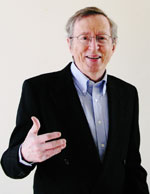 Steve Denning is the former program director of Knowledge Management at the World Bank. He now works with organizations in the U.S., Europe, Asia and Australia on knowledge management and organizational storytelling.
Steve Denning is the former program director of Knowledge Management at the World Bank. He now works with organizations in the U.S., Europe, Asia and Australia on knowledge management and organizational storytelling.
Steve is the author of several books on organizational storytelling, including:
- The Leader’s Guide to Storytelling: Mastering the Art and Discipline of Business Narrative (Jossey-Bass in April 2005).
- Squirrel Inc: A Fable of Leadership Through Storytelling (Jossey-Bass, 2004), a fable that elaborates seven different kinds of organizational storytelling
- The Springboard: How Storytelling Ignites Action in Knowledge-Era Organizations (Butterworth Heinemann, 2000), which describes how storytelling was used as a powerful tool for organizational change and knowledge management at the World Bank
Steve was born and educated in Sydney, Australia. He studied law and psychology at Sydney University and worked as a lawyer in Sydney for several years. He did a postgraduate degree in law at Oxford University in the U.K. before joining the World Bank, where held a number of positions from 1996 to 2000.
In 2000, Steve was named as one of the world’s “10 Most Admired Knowledge Leaders” (Teleos). In 2003, he was ranked as one of the world’s Top Two Hundred Business Gurus: Davenport & Prusak, “What’s The Big Idea?” (Harvard, 2003). In 2005, his book, The Leader’s Guide to Storytelling, was selected by the Innovation Book Club as one of the 12 most important books on innovation in the last few years.
Steve is a Senior Fellow at the James MacGregor Burns Leadership Academy at the University of Maryland.
Twitter, Facebook, blogs, wikis. A lot has changed on the web in recent years. So isn’t it time you revisited your organizations’ web site content strategy? An obsolete strategy can confound your audience and keep them away in droves. A successful content strategy, however, can be the spark that ignites your web site and helps you plan for and create compelling web content that rings true with your brand, aligns with your marketing plan, and keeps your target audience coming back for more. No small trick in a 140-character world.
What You Will Learn:
- Reasons why you need a web site content strategy
- Benefits of having a web content strategy that integrates with your marketing plan
- Key questions to ask to develop a successful web content strategy
- How to write web copy that is customer-centric, not sender-centric
- Top ten tips for writing concise and easy-to-scan web copy
- Tips for organizing content on a web page
Other Questions:
- What is a web content strategy and why do you need one?
- What process should you use to develop a web content strategy?
- How can you get customers and prospects to read your web copy?
- How can you determine if web content is good or bad?
- If your web content sucks, what’s the best way to fix it?
- How should you organize content on a web page?
Presented by:
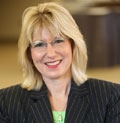 Barbara K. Mednick is an experienced and award-winning marketing communications and PR strategist, copywriter and trainer with more than 25 years of broad communications expertise. As president of BKM Consulting, Inc. in Minneapolis-St. Paul, Minn., she provides strategic marketing communications/PR consulting and planning, copywriting and training to a variety of clients including businesses, universities and nonprofit organizations. Prior to launching BKM Consulting in 1999, she held senior account management positions at several top Twin Cities PR and advertising agencies. During her career, she has garnered a number of industry awards for successful PR and marketing campaigns conducted for clients. She is a member of Minnesota Interactive Marketing Association (MIMA) and an active member of the Minnesota Chapter of the International Association of Business Communicators (IABC) – serving on the board of directors three times. She also serves on the board of directors for Minnesota Computers for Schools and the Ramsey County Workforce Investment Board. Barbara publishes a monthly e-newsletter for clients and colleagues along with a blog (www.bkminsights.blogspot.com), which focus on the intersection of marketing communications, public relations and social media marketing. Read Barbara’s complete bio.
Barbara K. Mednick is an experienced and award-winning marketing communications and PR strategist, copywriter and trainer with more than 25 years of broad communications expertise. As president of BKM Consulting, Inc. in Minneapolis-St. Paul, Minn., she provides strategic marketing communications/PR consulting and planning, copywriting and training to a variety of clients including businesses, universities and nonprofit organizations. Prior to launching BKM Consulting in 1999, she held senior account management positions at several top Twin Cities PR and advertising agencies. During her career, she has garnered a number of industry awards for successful PR and marketing campaigns conducted for clients. She is a member of Minnesota Interactive Marketing Association (MIMA) and an active member of the Minnesota Chapter of the International Association of Business Communicators (IABC) – serving on the board of directors three times. She also serves on the board of directors for Minnesota Computers for Schools and the Ramsey County Workforce Investment Board. Barbara publishes a monthly e-newsletter for clients and colleagues along with a blog (www.bkminsights.blogspot.com), which focus on the intersection of marketing communications, public relations and social media marketing. Read Barbara’s complete bio.
 Lisa Graham-Peterson, MA, ABC, is marketing communications director at CHS Inc., a Fortune 100 company and the largest farmer-owned agricultural cooperative in the U.S. Lisa integrates offline and online strategic programs to support the CHS brand and mission as a diverse grains, energy and foods company. Lisa is an accredited business communicator and active with a number of professional and community organizations. She has been a guest lecturer on integrated communications topics at the Carlson School of Management at the University of Minnesota, as well as St. Catherine University and Metropolitan State University, both in the St. Paul/Minneapolis area.
Lisa Graham-Peterson, MA, ABC, is marketing communications director at CHS Inc., a Fortune 100 company and the largest farmer-owned agricultural cooperative in the U.S. Lisa integrates offline and online strategic programs to support the CHS brand and mission as a diverse grains, energy and foods company. Lisa is an accredited business communicator and active with a number of professional and community organizations. She has been a guest lecturer on integrated communications topics at the Carlson School of Management at the University of Minnesota, as well as St. Catherine University and Metropolitan State University, both in the St. Paul/Minneapolis area.
Business professionals are called on frequently to write messages that attempt to get people to do things: to comply with a request, to accept ideas or to provide support. This often requires overcoming resistance, swaying the skeptics, winning over the “undecideds” or motivating the apathetic.
The ability to influence an audience is critical to business success, yet most people know little about the psychology of persuasion. It is not taught in high school, rarely in college, and almost never in an executive education program.
This session taps into the field of human behavior change and attitude modification. It looks at techniques you can use when you craft messages, for a written communication or for a speech, so that you influence the reader’s thought process and increase the likelihood that your reader or listener will agree. These techniques also will strengthen the writer/speaker’s credibility in the mind of the audience.
Aimed primarily at managers and executives, you’ll learn about gaining compliance and building your credibility through the use of principles of influence. The workshop focuses on crafting written and spoken messages in such a way as to alter the reader’s thought process.
Learning Topics:
- The importance of credibility
- What it really means to analyze your audience
- How to create a strong opening
- How to package your information for maximum impact
- Principles of attitude change: five ways to influence an audience
- Helping the audience remember: tips for making your ideas stand out
Instructor:
 Ken O’Quinn is a professional writing coach, who conducts workshops and one-on-one coaching in Fortune 500 companies and global public relations firms. He is the author of Perfect Phrases for Business Letters (McGraw-Hill, 2006).
Ken O’Quinn is a professional writing coach, who conducts workshops and one-on-one coaching in Fortune 500 companies and global public relations firms. He is the author of Perfect Phrases for Business Letters (McGraw-Hill, 2006).
He started Writing With Clarity in the mid-‘90s, following a 21-year journalism career, most of it with the Associated Press. He now works with companies such as Chevron, Campbell Soup, Visa, Intel, Eli Lilly, Raytheon, Reebok, Motorola and Sprint, and with PR firms such as Fleishman Hillard, Burson-Marsteller, Porter Novelli and Edelman. He also is a writing instructor for the National Investor Relations Institute.
Ken has been a guest speaker at the PRSA and IABC international conferences and at the American Press Institute. His writing has appeared in major U.S. newspapers and in such publications as the Harvard Management Communication Letter and the Employee Communication Management Journal.
Can you prove the value of your communication, marketing and PR programs? It’s a simple question, and your bosses rightfully expect concrete answers. How you respond affects the objectives you set, the programs you embark on and ultimately your career success.
Join “Unleashing the Power of PR” author and PRIME Research CEO, Mark Weiner, and SVP of BurrellesLuce, Johna Burke, as they walk you through the current communication measurement landscape in a way that makes new sense. Moderated by award winning journalist, communicator and president of Communitelligence, John Gerstner, Mark and Johna will answer — and sometimes debate — the most important and challenging questions every communication professional needs to know to prove the value of their internal and external communication programs.
This won’t just be a 5,000-foot fly-by of the topic. You’ll gain practical takeaways and actionable advice. Don’t miss this special webinar designed to amp up your skills in measuring PR programs and proving your worth. Did we mention this stuff is critical to your career?
Audio Excerpt
Some of the questions that will be answered:
- What kind of metrics should PR people be measuring?
- Why are clear, concise terminology and metrics so important when executing a public relations research and evaluation system?
- How can research be used to set better objectives
- What are the Barcelona Principles and what do they mean to me?
- How does research and measurement help to guide business decision-making?
- How can research and be used to avoid catastrophe?
- How do you foster a culture for communications research within the team? Among executive leadership?
- How do conduct research and measurement with little or no budget?
- What’s the difference between qualitative and quantitative research? How do you know which to use and when?
- What’s critical to know about measuring social media programs?
Presented by:
 Mark Weiner is the CEO of PRIME Research in North America. PRIME Research is one of the world’s largest public relations and corporate communications research and consulting providers with offices in Western Europe, North and South America, Eastern Europe and the Far East. Since 1993, Mark has devoted his career to helping many of the world’s most respected organizations and brands to demonstrate and generate a positive return on their investment in corporate and brand communications. He is the author of “Unleashing the Power of PR: A Contrarian’s Guide to Marketing and Communication” published by John Wiley & Sons. Weiner is a member of the PRSA, IABC and the Institute for Public Relations for whom he served as Trustee and Chairman of the Research and Measurement Commission. He is an editorial advisory board member of PRSA’s Strategist and PR News. A frequent provider of provocative public relations content, Weiner is a recurring conference speaker at international and domestic events, and a prolific author, having published more than one hundred articles.
Mark Weiner is the CEO of PRIME Research in North America. PRIME Research is one of the world’s largest public relations and corporate communications research and consulting providers with offices in Western Europe, North and South America, Eastern Europe and the Far East. Since 1993, Mark has devoted his career to helping many of the world’s most respected organizations and brands to demonstrate and generate a positive return on their investment in corporate and brand communications. He is the author of “Unleashing the Power of PR: A Contrarian’s Guide to Marketing and Communication” published by John Wiley & Sons. Weiner is a member of the PRSA, IABC and the Institute for Public Relations for whom he served as Trustee and Chairman of the Research and Measurement Commission. He is an editorial advisory board member of PRSA’s Strategist and PR News. A frequent provider of provocative public relations content, Weiner is a recurring conference speaker at international and domestic events, and a prolific author, having published more than one hundred articles.
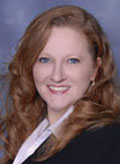 Johna Burke has 23 years experience working both as a public relations practitioner and a provider of services that are vital to the successful performance of communications professionals. For 11 years, starting in 1989, she was associated with U-Haul International, ultimately becoming head of public and investor relations. Ms. Burke joined BurrellesLuce, in its Phoenix office, in 2000. She served as West Coast regional vice president, a corporate vice president in 2008 and October 2009, was appointed senior vice president-marketing. Ms. Burke is a highly rated speaker who is often invited to talk about best practices in media relations and monitoring, including the measurement of PR effectiveness; her written views have appeared in a variety of PR industry outlets and she is a regular contributor to Fresh Ideas, the incisive blog produced by BurrellesLuce. Ms. Burke is immediate past chair of the Southern Region of the International Association of Business Communicators and current chair of its Nominations Committee.
Johna Burke has 23 years experience working both as a public relations practitioner and a provider of services that are vital to the successful performance of communications professionals. For 11 years, starting in 1989, she was associated with U-Haul International, ultimately becoming head of public and investor relations. Ms. Burke joined BurrellesLuce, in its Phoenix office, in 2000. She served as West Coast regional vice president, a corporate vice president in 2008 and October 2009, was appointed senior vice president-marketing. Ms. Burke is a highly rated speaker who is often invited to talk about best practices in media relations and monitoring, including the measurement of PR effectiveness; her written views have appeared in a variety of PR industry outlets and she is a regular contributor to Fresh Ideas, the incisive blog produced by BurrellesLuce. Ms. Burke is immediate past chair of the Southern Region of the International Association of Business Communicators and current chair of its Nominations Committee.
PR & Marketing Is Changing – Are You? Online PR provides the means to reach target audiences directly, with or without participation of the news media. Internet marketers have been doing that for years, but public relations professionals have been slow to get on board. No PR professional can afford to ignore online PR or outsource it to specialists; it is an essential part of the skill set all PR professionals must have. It’s as fundamental as writing, pitching and building relationships.
So, what must you know to thrive in this ever-changing online environment? If you’re like most public relations pros, you need a broader knowledgebase, greater online skills – and perhaps, a new mindset. PR pros are doing a better job with social media than keyword research and SEO, which much change. To define online PR simply as social media is short-sighted and will lead PR pros astray. This jam-packed webinar will give you a critical understanding of the basic online PR skills you need to master fast, for the sake of your clients, employers and your career.
Learning Topics:
- When SEO meets PR: how to write effectively for sites, releases, articles and newsletters
- When PR meets social media: which sites, what to monitor, and how do you know it’s working?
- How keyword research for Online PR differs from online advertising
- Online PR best practices for your website
- Optimizing online press releases—what’s most effective now
What You Will Learn:
- 4 results-driven SEO techniques for online PR
- A 10-minute keyword research method that always yields insights
- The right and wrong role websites play with Online PR
- 3 proven ways to write copy for both humans and search engines
- Traditional vs. online releases: the real data may surprise you
- An overlooked yet powerful method to gain consistent web site traffic
- The Online PR Social Media blueprint: it’s not what you think
- Buzz and reputation monitoring: recommended tools and tactics.
Presented by:
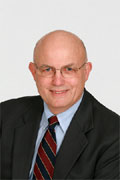 Jim Bowman has broad experience in all functional areas of public relations and corporate communications, with an emphasis on media relations. As Vice President of Corporate Communications for Nokia Inc., he was part of the global team that established Nokia as one of the world’s top 10 brands. Jim’s strategies and creative thinking have helped build the brands and images of some of the world’s most respected companies and get small companies known. As owner and President of J. R. Bowman and Associates, LLC, Jim now concentrates on serving small-to-medium-size businesses. Jim’s ability to diagnose PR problems and suggest solutions earned him the name, “The PR Doc®” among his associates. He has launched http://www.theprdoc.com to help small agencies and individual public relations practitioners get affordable access to PR tools and expert help from senior practitioners. Jim was recognized by his peers with election to the Arthur W. Page Society, a selected-membership organization of senior public relations executives, and appointment to the client advisory board of the Council of Public Relations Firms.
Jim Bowman has broad experience in all functional areas of public relations and corporate communications, with an emphasis on media relations. As Vice President of Corporate Communications for Nokia Inc., he was part of the global team that established Nokia as one of the world’s top 10 brands. Jim’s strategies and creative thinking have helped build the brands and images of some of the world’s most respected companies and get small companies known. As owner and President of J. R. Bowman and Associates, LLC, Jim now concentrates on serving small-to-medium-size businesses. Jim’s ability to diagnose PR problems and suggest solutions earned him the name, “The PR Doc®” among his associates. He has launched http://www.theprdoc.com to help small agencies and individual public relations practitioners get affordable access to PR tools and expert help from senior practitioners. Jim was recognized by his peers with election to the Arthur W. Page Society, a selected-membership organization of senior public relations executives, and appointment to the client advisory board of the Council of Public Relations Firms.
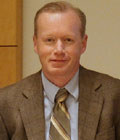 Mike Moran, is author of the acclaimed book on Internet marketing, Do It Wrong Quickly, on the heels of the best-selling Search Engine Marketing, Inc., Mike Moran led many initiatives on IBM’s Web site for eight years, including IBM’s original search marketing strategy. Mike holds an Advanced Certificate in Market Management Practice from the Royal UK Charter Institute of Marketing, and is a Visiting Lecturer at the University of Virginia’s Darden School of Business. He also writes marketing columns for Internet Evolution and Search Engine Guide. Mike frequently keynotes conferences on Internet marketing for marketers, public relations specialists, market researchers, and technologists, and serves as Chief Strategist for Converseon, a leading digital media marketing agency. Prior to joining Converseon, Mike worked for IBM for 30 years, rising to the level of Distinguished Engineer. Mike can be reached through his Web site (mikemoran.com), which is also home to his Biznology newsletter and blog.
Mike Moran, is author of the acclaimed book on Internet marketing, Do It Wrong Quickly, on the heels of the best-selling Search Engine Marketing, Inc., Mike Moran led many initiatives on IBM’s Web site for eight years, including IBM’s original search marketing strategy. Mike holds an Advanced Certificate in Market Management Practice from the Royal UK Charter Institute of Marketing, and is a Visiting Lecturer at the University of Virginia’s Darden School of Business. He also writes marketing columns for Internet Evolution and Search Engine Guide. Mike frequently keynotes conferences on Internet marketing for marketers, public relations specialists, market researchers, and technologists, and serves as Chief Strategist for Converseon, a leading digital media marketing agency. Prior to joining Converseon, Mike worked for IBM for 30 years, rising to the level of Distinguished Engineer. Mike can be reached through his Web site (mikemoran.com), which is also home to his Biznology newsletter and blog.
 Marc Harty is CEO of MainTopic Media, Inc., a strategically focused, values-driven, marketing consultancy and training company. Ever the entrepreneur, Marc has owned an ad agency, a web development firm, and a search marketing firm. A marketing strategist with over two decades of distinguished service, Marc has won over 200 local, national and International awards, including two Clio’s and “Best Of Show” from The Dallas Ad League. Marc speaks regularly on Online PR, Thought Leadership, Social Marketing and Internet Business Transformation. His true passion? Developing proven marketing programs that can help anyone get the visibility and results to successfully manifest their life purpose.
Marc Harty is CEO of MainTopic Media, Inc., a strategically focused, values-driven, marketing consultancy and training company. Ever the entrepreneur, Marc has owned an ad agency, a web development firm, and a search marketing firm. A marketing strategist with over two decades of distinguished service, Marc has won over 200 local, national and International awards, including two Clio’s and “Best Of Show” from The Dallas Ad League. Marc speaks regularly on Online PR, Thought Leadership, Social Marketing and Internet Business Transformation. His true passion? Developing proven marketing programs that can help anyone get the visibility and results to successfully manifest their life purpose.
Are you the same journalist with the same skills you had five or 10 years ago? When you sit down to write, do you visualize your piece the same way you did then? And what about your publications? Are they keeping up with the times or looking tired and ponderous? What has the Internet taught you about how to produce your publications in such a way that readers can access information more effectively and efficiently?
The Internet has changed forever the way people receive, expect to receive and process information. It’s a “click-here” world in which readers are completely in charge. They want and expect information NOW. So how do you ensure you’re giving them what they want?
Learnings/takeaways:
You will learn how to think verbally and visually and save your readers time. You’ll also pick up practical tips that will help make your text easy-to-read and ensure the information you provide is consistently legible and user-friendly.
The course explores:
- Five characteristics of a good Web site and how to apply them to your publication
- Three principles for writing on the Web and how to apply them to print
- 10 rules for writing on the Web and how to apply them to print.
Best of all, you’ll be able to put these tips to work immediately and see instant improvement in your publications.
Instructor:
 Don Ranly is professor emeritus of the Missouri School of Journalism, where he taught for 32 years. He has an M.A. in journalism, an M.A. in speech from Marquette University, a certificate in film, radio and television from New York University and a doctorate in journalism from the University of Missouri.
Don Ranly is professor emeritus of the Missouri School of Journalism, where he taught for 32 years. He has an M.A. in journalism, an M.A. in speech from Marquette University, a certificate in film, radio and television from New York University and a doctorate in journalism from the University of Missouri.
Don has conducted more than 950 seminars for organizations, corporations, associations and publications. He is co-author of News Reporting and Writing (8th ed.), Telling the Story: The Convergence of Print, Broadcast and Online Media (2nd ed.) and Beyond the Inverted Pyramid and author of Publication Editing.
In 1995, he received a University of Missouri-Columbia Faculty-Alumni Award and was named the O.O. McIntyre Distinguished Professor of Journalism for 1995-1996. In 1998, he won a University of Missouri Gold Chalk award for outstanding service in the training and mentoring of professional students. In 2002, he was elected a Fellow of the International Association of Business Communicators. In 2003, he became a William T. Kemper Fellow for Excellence in Teaching and, in 2005, won a Lifetime Achievement Award from the American Society of Business Publications Editors.
He is a former executive director of the Missouri Association of Publications, which he founded in 2004.
This learning opportunity is ideal for:
- Writers
- Editors
- Designers
- Publishers, print and electronic
It’s also an important addition to the offerings of college/university libraries and bookstores.
Today’s readers are better described as skimmers and scanners; the story is the last thing and the least-read thing they read. Writing effective headlines, captions and blurbs must be an integral part of the writing and editing process — from the beginning, with everyone involved.
More about this seminar from Don Ranly:
“In this seminar, we’ll talk about what makes good headlines or titles and the techniques for creating them. We’ll discuss various kinds of heads — those strictly for news, those for features and those for advertising. What they all have in common is that they must grab readers. They must sell the copy. And EVERYONE must be involved in creating them. We will discuss the creative process that goes into coming up with the best heads.
“Blurbs, break-outs, pullquotes, whatever you choose to call them, grab attention. They stop readers and make them try to find other interesting things in the copy. We’ll discuss what kinds of things to put into blurbs and how to construct them.
“Captions are the most neglected element in most publications. Some photos go without any captions — which is inexcusable. People read captions, so they are a good place to deliver important information and to hook readers into reading the story. Other captions simply explain what’s going on in the photo. People can usually see that. We’ll discuss content of captions and their proper length, as well as typeface, etc. We’ll give you 10 rules for writing them.”
Learning Topics
Underestimating the intelligence of your audience is just one of the 10 major mistakes to be reviewed in this teleseminar. Others include:
- The techniques and importance of brainstorming
- How and why to use literary and poetic techniques
- Four characteristics of brighter, more attractive heads
- How to write summary blurbs that give readers the benefit
- The power of the word “how”
- The importance of tips and of quantifying the benefits
- How to write internal blurbs that tease and coax
- How to write captions that complement and inform
Instructor:
 Don Ranly, Ph.D., is professor emeritus of the Missouri School of Journalism, where he taught for 32 years. He has an M.A. in journalism, an M.A. in speech from Marquette University, a certificate in film, radio and television from New York University and a doctorate in journalism from the University of Missouri.
Don Ranly, Ph.D., is professor emeritus of the Missouri School of Journalism, where he taught for 32 years. He has an M.A. in journalism, an M.A. in speech from Marquette University, a certificate in film, radio and television from New York University and a doctorate in journalism from the University of Missouri.
Don has conducted more than 950 seminars for organizations, corporations, associations and publications. He is co-author of News Reporting and Writing (8th ed.), Telling the Story: The Convergence of Print, Broadcast and Online Media (2nd ed.) and Beyond the Inverted Pyramid and author of Publication Editing.
In 1995, he received a University of Missouri-Columbia Faculty-Alumni Award and was named the O.O. McIntyre Distinguished Professor of Journalism for 1995-1996. In 1998, he won a University of Missouri Gold Chalk award for outstanding service in the training and mentoring of professional students. In 2002, he was elected a Fellow of the International Association of Business Communicators. In 2003, he became a William T. Kemper Fellow for Excellence in Teaching and, in 2005, won a Lifetime Achievement Award from the American Society of Business Publications Editors.
He currently serves as executive director of the Missouri Association of Publications, which he founded in 2004
Learn the seven keys to communication credibility and to a more professional you.
Whether you like it or not, how you present yourself in person or in print does more than leave an impression. For yourself and those you represent, it establishes your basic credibility. That quick note, that dashed-off e-mail or that hurried newsletter may be all your colleagues or clients know about your competence — or how much you care. Learn seven keys to credibility and to a more professional you.
In this seminar you will learn the importance of being:
- Correct (get it right – grammar, spelling)
- Consistent (follow a stylebook)
- Clear (use simple words, short sentences, short paragraphs)
- Concise (save people time)
- Coherent (think structure, organization)
- Complete (answer the questions)
- Creative (be interesting, don’t bore)
Who should purchase this webinar:
- Writers
- Editors
- Designers
- Publishers, print and electronic
It’s also an important addition to the offerings of college/university libraries and bookstores.
Instructor:
 , Ph.D., is professor emeritus of the Missouri School of Journalism, where he taught for 32 years. He has an M.A. in journalism, an M.A. in speech from Marquette University, a certificate in film, radio and television from New York University and a doctorate in journalism from the University of Missouri.
, Ph.D., is professor emeritus of the Missouri School of Journalism, where he taught for 32 years. He has an M.A. in journalism, an M.A. in speech from Marquette University, a certificate in film, radio and television from New York University and a doctorate in journalism from the University of Missouri.
Don has conducted more than 950 seminars for organizations, corporations, associations and publications. He is co-author of News Reporting and Writing (8th ed.), Telling the Story: The Convergence of Print, Broadcast and Online Media (2nd ed.) and Beyond the Inverted Pyramid and author of Publication Editing.
In 1995, he received a University of Missouri-Columbia Faculty-Alumni Award and was named the O.O. McIntyre Distinguished Professor of Journalism for 1995-1996. In 1998, he won a University of Missouri Gold Chalk award for outstanding service in the training and mentoring of professional students. In 2002, he was elected a Fellow of the International Association of Business Communicators. In 2003, he became a William T. Kemper Fellow for Excellence in Teaching and, in 2005, won a Lifetime Achievement Award from the American Society of Business Publications Editors.
He currently serves as executive director of the Missouri Association of Publications, which he founded in 2004.
Email is now so embedded into our daily lives that we think nothing of it. We need to, however, because the Internet’s original “killer app” is starting to kill employee productivity and focus. Consider these findings:
- The average business executive spends two hours a day on e-mail
- 70% of employees react to emails within 6 seconds of them arriving
- The number of e-mail messages sent is rising dramatically — by some estimates, by more than 20% a year
- Almost one in five emails was copied unnecessarily to staff members other than the main recipient
- The use – and, particularly, the misuse – of email costs businesses up to $16,000 per employee per year
This webinar is aimed at arming attendees with the insight and ideas to help them get a lot smarter about using email, for themselves and their organizations. Don’t miss this rare chance to learn the latest thinking and best practices from two of the foremost global experts on this topic.
What you will learn:
- The state of workplace email today, and why communication professionals need to get activated in the battle
- Why this problem is so hard to solve, and what you must do to overcome the hurdles
- How to develop a centralized strategy to minimize internal communication emails
- How to launch an effective email etiquette program that will make everyone in your organization happier about their inbox.
- Tools, tips and tricks to outsmart your inbox
“I learned that the biggest levers we can pull to change our email situation are behavior based, not technology based.”
“I didn’t realize how much research exists on this topic.”
Who should attend
Anyone who would like to learn how to better conquer their daily email war, and help their organization feel less pain and angst from their inbox. This webinar is especially suitable for professionals in the areas of internal communications, marketing and public relations.
Presented by:
 David Grossman, ABC, APR, Fellow PRSA, is both a teacher and student of effective communication. He is one of America’s foremost authorities on communication and leadership inside organizations. A much sought-after consultant and speaker, David is often quoted in media, providing expert commentary and analysis on employee and leadership issues. Most recently, he was featured on “NBC Nightly News” about e-mail overload, and in the Chicago Tribune. David is Founder and CEO of The Grossman Group, an award-winning Chicago-based communications consultancy focused on organizational consulting, strategic leadership development and internal communications. His most recent books are You Can’t NOT Communicate: Proven Solutions That Power the Fortune 100, (now in its second edition), and its follow up You Can’t NOT Communicate 2: More Proven Solutions That Power the Fortune 100.
David Grossman, ABC, APR, Fellow PRSA, is both a teacher and student of effective communication. He is one of America’s foremost authorities on communication and leadership inside organizations. A much sought-after consultant and speaker, David is often quoted in media, providing expert commentary and analysis on employee and leadership issues. Most recently, he was featured on “NBC Nightly News” about e-mail overload, and in the Chicago Tribune. David is Founder and CEO of The Grossman Group, an award-winning Chicago-based communications consultancy focused on organizational consulting, strategic leadership development and internal communications. His most recent books are You Can’t NOT Communicate: Proven Solutions That Power the Fortune 100, (now in its second edition), and its follow up You Can’t NOT Communicate 2: More Proven Solutions That Power the Fortune 100.
 Nathan Zeldes is an independent organizational consultant, a role he has adopted in 2009 after a 26 year career at Intel corporation. A physicist morphed into an organizational change agent, Nathan is recognized as a global thought leader in the search for improved knowledge worker productivity. Having enjoyed a long career as a manager and principal IT engineer at Intel, he now helps organizations to solve core problems at the intersection of technology and human behavior. His experience includes initiating and leading optimal corporate technology adoptions in the domains of Information Technology, Internet applications, Innovation Management, Remote and Distributed work, and Knowledge Management. A key component in Nathan’s work is mitigating the problem of email and information overload which is harming the productivity and quality of life of Knowledge Workers everywhere. He had identified the problem 17 years ago, and since then he’s developed and deployed original solutions at Intel and other companies, and has founded the Information Overload Research Group to further its study. He is also active at present in the areas of Social Media adoption, Technical Leadership development, and the multi-generational workplace of the future. Nathan’s blog is Challenge Information Overload.
Nathan Zeldes is an independent organizational consultant, a role he has adopted in 2009 after a 26 year career at Intel corporation. A physicist morphed into an organizational change agent, Nathan is recognized as a global thought leader in the search for improved knowledge worker productivity. Having enjoyed a long career as a manager and principal IT engineer at Intel, he now helps organizations to solve core problems at the intersection of technology and human behavior. His experience includes initiating and leading optimal corporate technology adoptions in the domains of Information Technology, Internet applications, Innovation Management, Remote and Distributed work, and Knowledge Management. A key component in Nathan’s work is mitigating the problem of email and information overload which is harming the productivity and quality of life of Knowledge Workers everywhere. He had identified the problem 17 years ago, and since then he’s developed and deployed original solutions at Intel and other companies, and has founded the Information Overload Research Group to further its study. He is also active at present in the areas of Social Media adoption, Technical Leadership development, and the multi-generational workplace of the future. Nathan’s blog is Challenge Information Overload.





